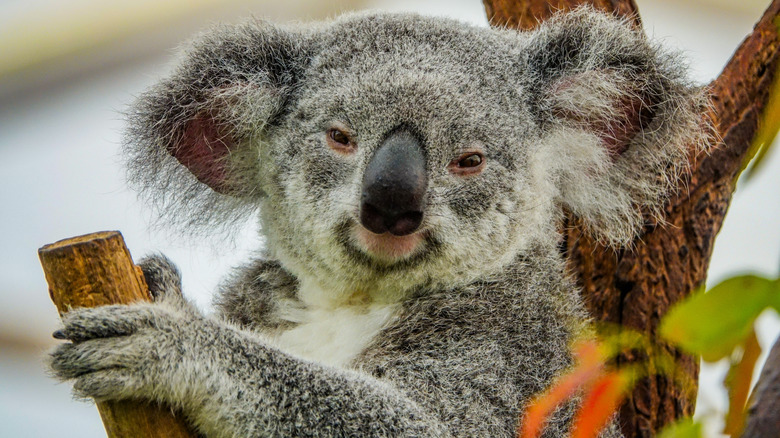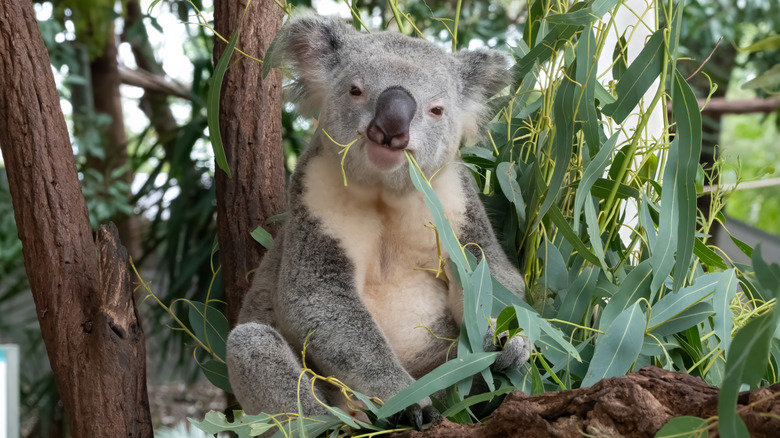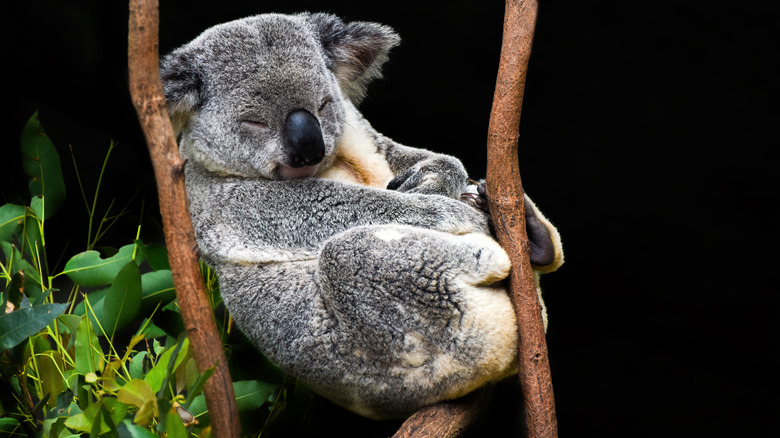Why We're Stunned Koalas Haven't Gone Extinct Yet
Koalas are instantly recognizable icons of Australian wildlife. Unfortunately, they've also become icons of endangerment in the age of climate catastrophe. The IUCN Red List labels koalas as a vulnerable species, but their status has not been reassessed in over a decade, and the situation has become more severe in that time. Some researchers believe that koalas are now functionally extinct in the wild. Recent years have been especially rough, as koalas suffered greatly from the 2022 Australian wildfires.
Koalas are in a bad spot these days, but in many ways, it's remarkable that they've even survived this long. Human-driven climate change is the greatest threat to koalas, but they aren't helping their own cause either. In fact, it's hard to imagine a species less suited to endure a crisis than the poor koala. They are equipped with tiny brains and bad eyesight, and are widely considered among the least intelligent mammal species. Their greatest weakness is the fact that they are almost entirely dependent on a single food source, that being eucalyptus leaves. Loss of eucalyptus trees due to wildfires and deforestation is the koala's primary concern, but when you dive a little deeper into their diet, it starts to look like koalas set themselves up for failure.
The ridiculousness of the koala diet
The koala's dependence on eucalyptus is perhaps the most baffling dietary choice in the entire animal kingdom. Eucalyptus is packed with toxins, and would make practically every other animal in the world sick to their stomach. However, koalas' digestive systems are uniquely adapted to flush out these toxins. It's a useful adaptation, but it makes less sense when you look into the nutritional value of eucalyptus. It is almost completely devoid of nutrients and offers very few calories, yet it is so fibrous that a lot of the energy gained from it just goes back into digesting it. Koalas' net gain from their eucalyptus diet is so little that they have to sleep for up to 20 hours each day, and spend almost all of their waking hours eating.
To make matters worse, koalas refuse to eat over 90% of eucalyptus species, depending on fewer than 50 varieties out of more than 700 options. It also appears that koalas are unable to recognize their food source unless it is attached to a tree. If a zookeeper serves a koala eucalyptus leaves on a plate, the animal won't eat. It is almost as if koalas are on a mission to starve themselves, and many people have labeled them one of the world's stupidest animals as a result. However, we need to be cautious about holding other animals to our human standards of intelligence.
The pitfalls of judging animal intelligence
It's hard to say what intelligence really is because it depends so much on context. Many animals are much smarter than we give them credit for, but koalas definitely seem especially dim at first glance. Their brains only fill about 60% of their cranium, giving koalas one of the smallest brain-to-body ratios of any mammal species. Furthermore, their brains are almost completely smooth. The folds in a human brain, a trait known as gyrification, greatly increases the surface area of the cerebral cortex and make room for more neurons. They also create more connections within the brain for faster cognitive functions.
Based on this information, it's easy to see how koalas got their reputation, but we need to step back from human standards and reframe our judgements within the context of a koala's environment. Eucalyptus isn't very nutritious, but it's actually the best and most abundant offering in the forests where koalas live. The soil in these regions is nutrient-poor to begin with, meaning nothing growing in it is going to make for great food. Koala brains might not be impressive, but the fact that they are one of the only animals that can eat eucalyptus is really impressive. In fact, their small, smooth brains are a part of this adaptation, as bigger brains would take far too much of the animal's already-limited energy supply. Sometimes, being dumb is the smartest thing to do.


